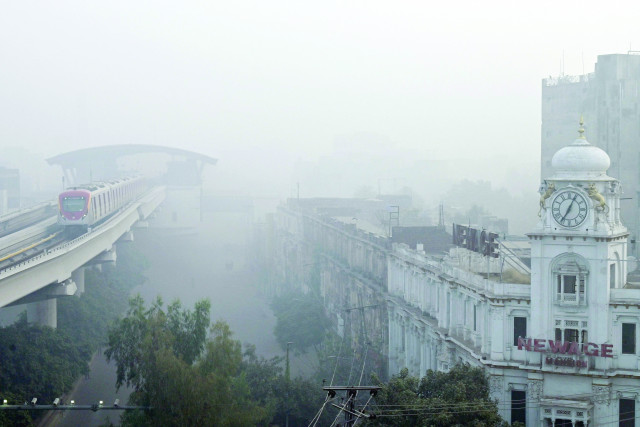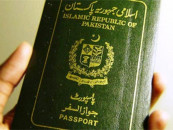Lahore tops global pollution ranking
Faisalabad, Gujranwala, Multan, Bahawalpur also exposed to unhealthy air

Punjab's air quality remained firmly in the "very unhealthy" range on Thursday, as stagnant winds and cross-border pollution drove smog levels higher across major cities, with Lahore once again ranking as the world's most polluted urban centres.
The Punjab Environmental Protection Agency (EPA) reported a provincial average Air Quality Index of 216 between 8:00am and 3:00pm, marking another day of hazardous breathing conditions for millions of residents. Lahore topped the list with an AQI of 318, followed closely by Khanewal at 316 and Kasur at 284.
Several other districts — including Faisalabad, Rahim Yar Khan, Sheikhupura, Gujranwala, Hafizabad, Narowal, Multan, and Bahawalpur — also recorded levels in the "unhealthy" to "very unhealthy" categories.
In Lahore, localised monitoring revealed even sharper spikes. The EPA's hourly map placed Kahna Nau Hospital at an AQI of 441, while Shahdara Teaching Hospital logged 392 and UET 385. LWMC reported 384, and Safari Park 377, illustrating that smog concentrations remained elevated across both northern and southern parts of the city.
In the afternoon, Lahore led the world with an AQI of 266 on the international index, surpassing New Delhi (248), Tashkent (236) and Kolkata (190). Karachi, Dhaka and Cairo also featured among the 10 most polluted cities, underscoring a persistent winter smog belt stretching across South and Central Asia.
Meteorologists attribute the worsening conditions to a familiar seasonal mix: dry continental air, weak winds, dropping nighttime temperatures and the formation of an inversion layer that traps fine particulate matter near the surface.
A shallow westerly wave is brushing the country's upper regions, but forecasters say it is too weak to disperse the haze over Punjab.
"For now, the wind pattern is simply not strong enough to lift or dilute the smog blanket," a senior weather official noted. Data indicates winds hovering at minimal speeds overnight, which allows pollution from traffic, industry and cross-border flows to accumulate through the early morning hours.
The Pakistan Meteorological Department's latest advisory warns that cold and dry weather will dominate most of the country through Friday, with very cold conditions in hilly areas and recurring smog or shallow fog patches across Punjab and Khyber-Pakhtunkhwa. Light rain or snowfall is possible in Gilgit-Baltistan, but officials say it will have no meaningful effect on air quality in the plains.
Over the past 24 hours, the conditions in much of the country remained dry, while northern valleys saw temperatures plunge well below freezing. Skardu recorded minus 6°C and several other locations fell to minus 3°C — conditions that tend to strengthen overnight smog formation across central Pakistan.
Health specialists reiterated warnings for sensitive groups, including children, senior citizens and people with respiratory conditions. Residents were urged to avoid outdoor exercise, reduce unnecessary travel during morning hours and use protective masks when visibility drops.
Traffic police and emergency services reported vehicle congestion early in the day as visibility declined in several pockets of Lahore and Sheikhupura.
Environmental officials say meaningful improvement is unlikely until wind patterns shift or rainfall arrives — neither of which appears likely in the immediate forecast following a week-long spell of some of the poorest air quality readings recorded this winter.



















COMMENTS
Comments are moderated and generally will be posted if they are on-topic and not abusive.
For more information, please see our Comments FAQ